Educational aims and objectives
The aim of this article is to describe the key aspects of treatment planning for aging patients with failing dentition.
Expected outcomes
Implant Practice US subscribers can answer the CE questions by taking this quiz to earn 2 hours of CE from reading this article. Correctly answering the questions will demonstrate the reader can:
- Recognize the importance of planning for occlusal interference when treating patients with dental implants.
- Recognize the role of occlusion in the failure of the dentition.
- Identify factors precipitating occlusal trauma.
- See a treatment plan for a patient with specific dental issues.
- Realize that treatment should create a stable, functional, and esthetic endpoint.
- Realize that clinicians need to try and maintain any deterioration or adaptation of the dental functioning system within normal limits and not be the cause of its acceleration.
Dr. Komal Suri discusses the principles of smile design when dealing with an aged dentition with multiple restorations
Increasingly, the numbers of patients walking through the doors of our practices are those whose dentition is slowly in decline. I am presented on a daily basis with patients requiring replacement of missing teeth, restoration of worn and discolored teeth, and those whose teeth are mobile and would like to be able to function adequately. Often patients are only aware of the localized area of failure and are focused on addressing only that area of their mouth; one or two mobile teeth, one or two spaces that need to be filled, worn and discolored anterior teeth.
As the experts, it is our responsibility to provide the patients with a solution to their problem that will have longevity, predictability, and not accelerate the deterioration of the surrounding dentition and supporting structures.
Longevity and predictability of the treatment arise not only from the restoration itself but also dealing with the cause of the breakdown and deterioration so that the restoration that has been provided for the patient does not fail in the same way as the natural tooth. This needs to be explained to the patient at the initial consultation so that they can understand why a thorough assessment and diagnosis is required. In my experience, patients invariably agree with the rationale and understand that detailed examination is necessary in order to determine the correct treatment plan for them.
This allows for the practice of comprehensive dental treatment and may involve a multidisciplinary approach when necessary.


Figure 1: Pretreatment, smile view and Figure 2: Pretreatment, retracted view


Figure 3: Pretreatment, central view and Figure 4: Pretreatment, right side view



Figure 5: Pretreatment, left side view and Figure 6: Pretreatment, upper occlusal view and Figure 7: Pretreatment, lower occlusal view


Figure 8A: Left lateral excursion and Figure 8B: Left lateral excursion
The role of occlusion
When assessing the mode of failure of any dentition, it is advisable to try and determine the root cause of the problem and secondary factors that may be accelerating the loss of teeth, bone, or tooth structure.

The roles of caries and periodontal disease in the deterioration of dental health have long been documented. Although the role of occlusion is loosely recognized by many dentists, little credence is given to it either due to lack of understanding of occlusal factors, lack of knowledge of how to address the treatment, and inability to explain this to the patient. Treatment can often be more extensive if occlusal issues are taken into account (Davies, et al., 2001; Svanberg, et al., 1995). Therefore, better understanding of these factors and treatment modalities is needed.
Occlusal trauma
Primary occlusal trauma results from excessive occlusal forces applied to a tooth or teeth with normal supporting structure. Secondary occlusal trauma occurs when normal/excessive occlusal forces cause trauma to a tooth or teeth with reduced periodontal support.
Factors precipitating occlusal trauma:
- Increased bite force
- Oversized masseters
- Tendency to clench — relevance to jaw type
- Habitual bruxism
- Primary occlusal trauma
- Reduced bone support
- Post perio disease
- Secondary occlusal trauma
- Reduced number of teeth
- Shortened dental arch
- Lack of posterior teeth
- Instability
- Premature contact — posterior/ anterior
- Working and nonworking side interferences
- Anterior tooth position
- OB — increased/reduced
- Retroclined incisors
- Distalized mandible
- Tooth morphology in relation to envelope of function
In order to formulate a treatment plan, the reason for the instability/destruction needs to be discovered. This is carried out by the evaluation of the entire functioning system to determine the modes of failure and assess the risk of future failure.
The “Occlusal function checklist” (above) describes the approach, but there are specific parameters to be evaluated, as laid out in Table 1: Establishing a cause of destruction. In order to show how occlusion can and should be incorporated into a restorative treatment plan, the case presented here involves a multidisciplinary approach to correct a failing dentition that involves occlusal factors.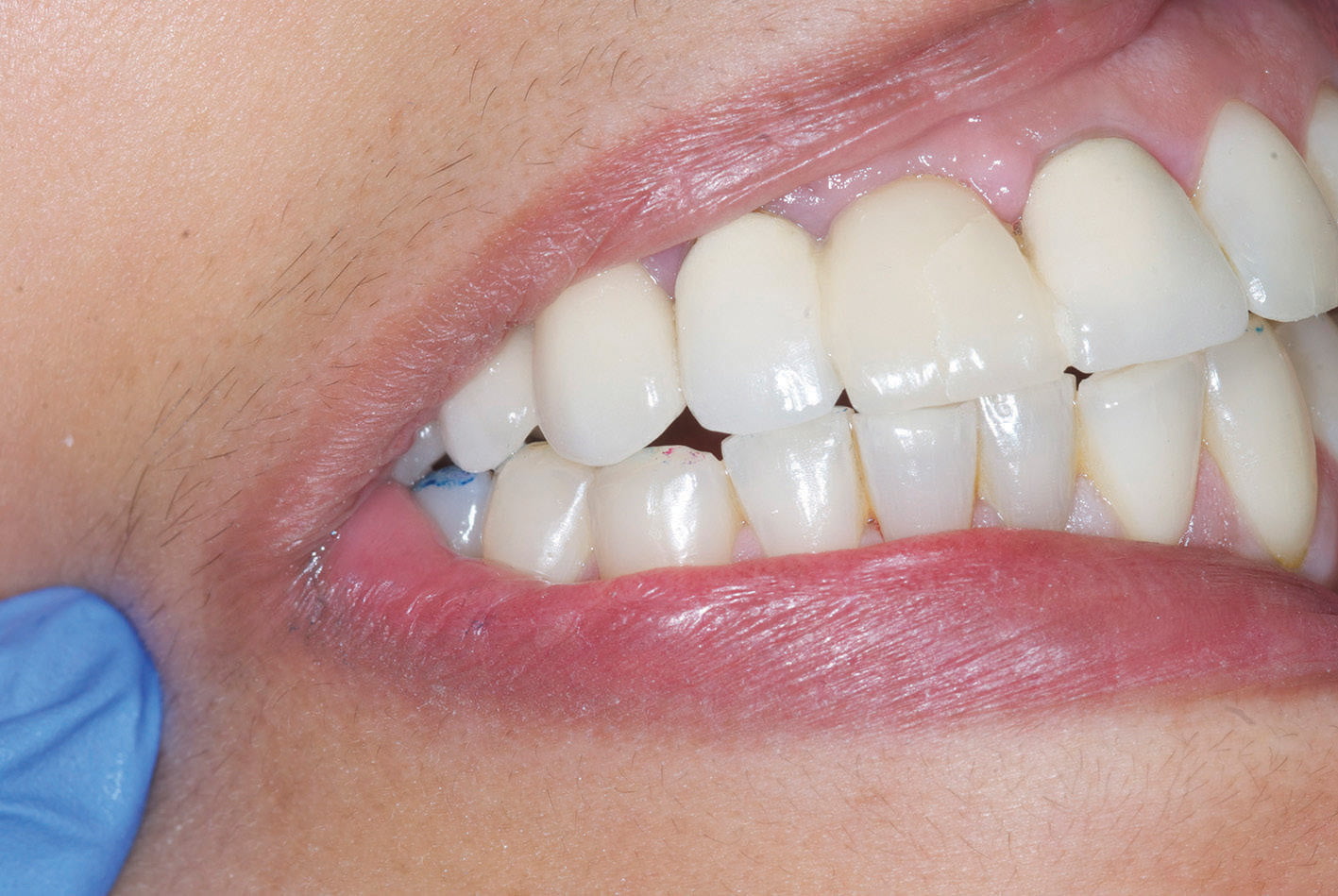
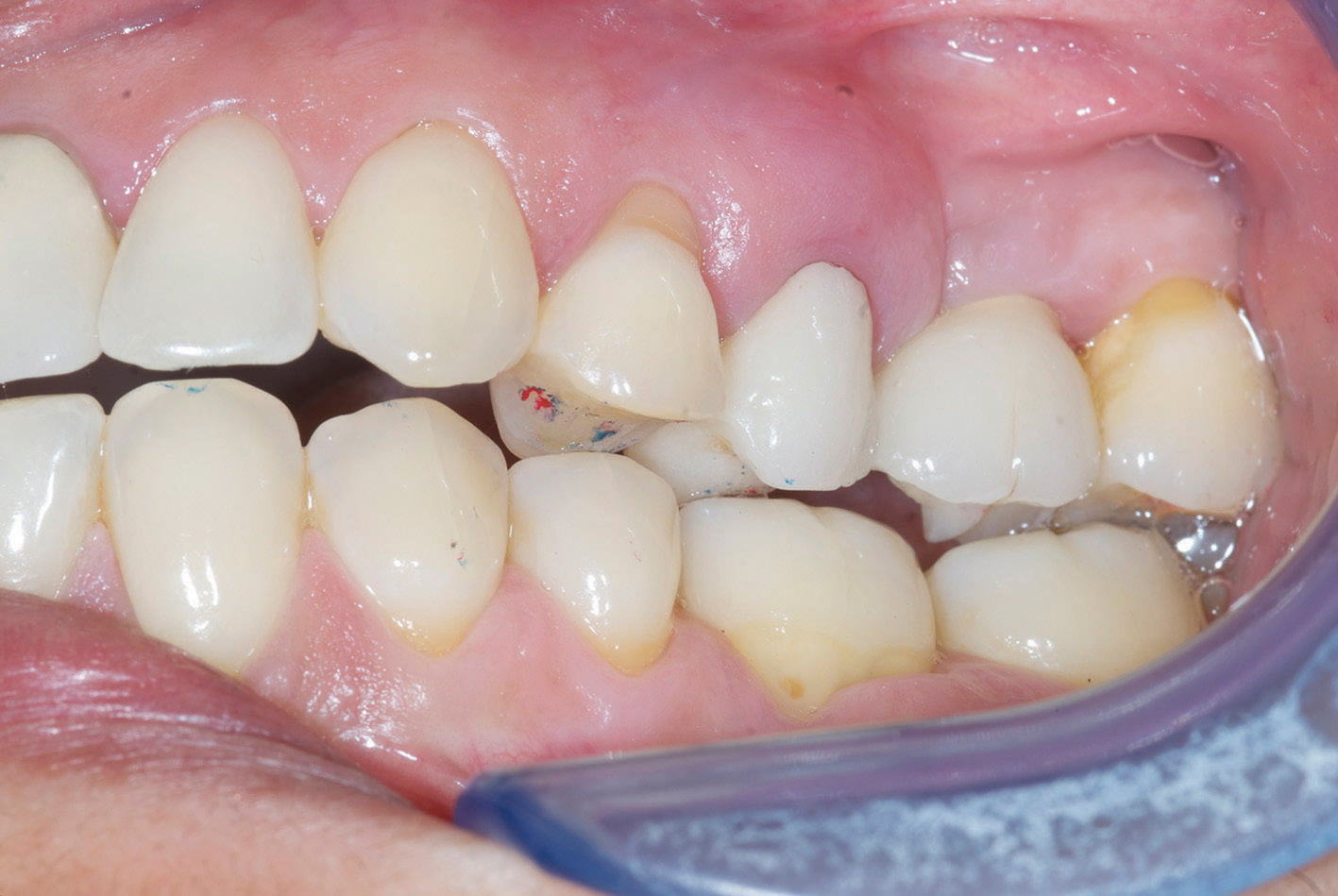

Figure 9: Right lateral excursion and Figure 10: Nonworking side interference and Figure 11A: Anterior guidance

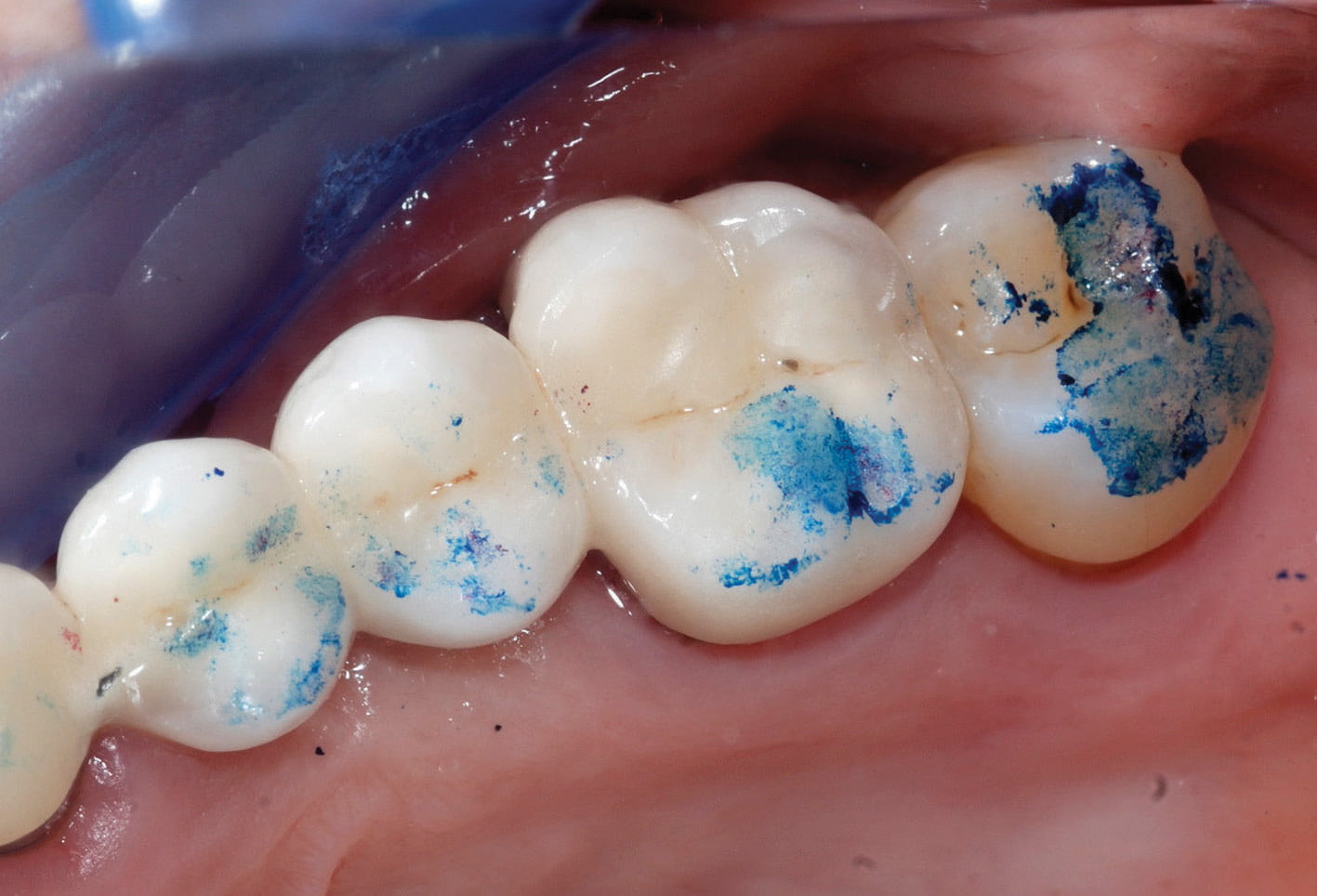

Figure 11B: Anterior guidance and Figure 12: Markings showing heavy occlusal contacts during function on UR7 and UR6 and Figure 13A: Recession around the UL4 relating to the bone loss around the tooth
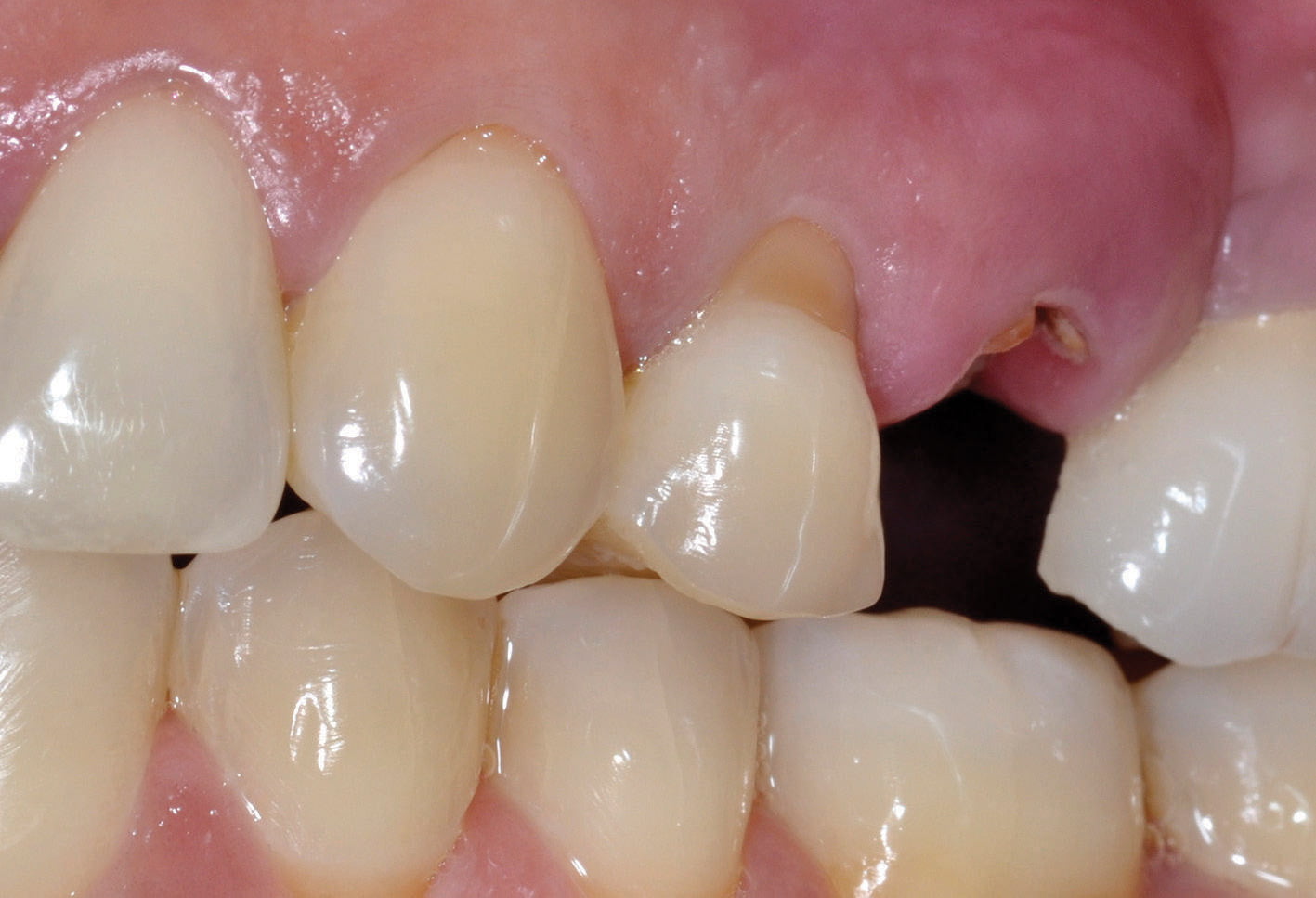
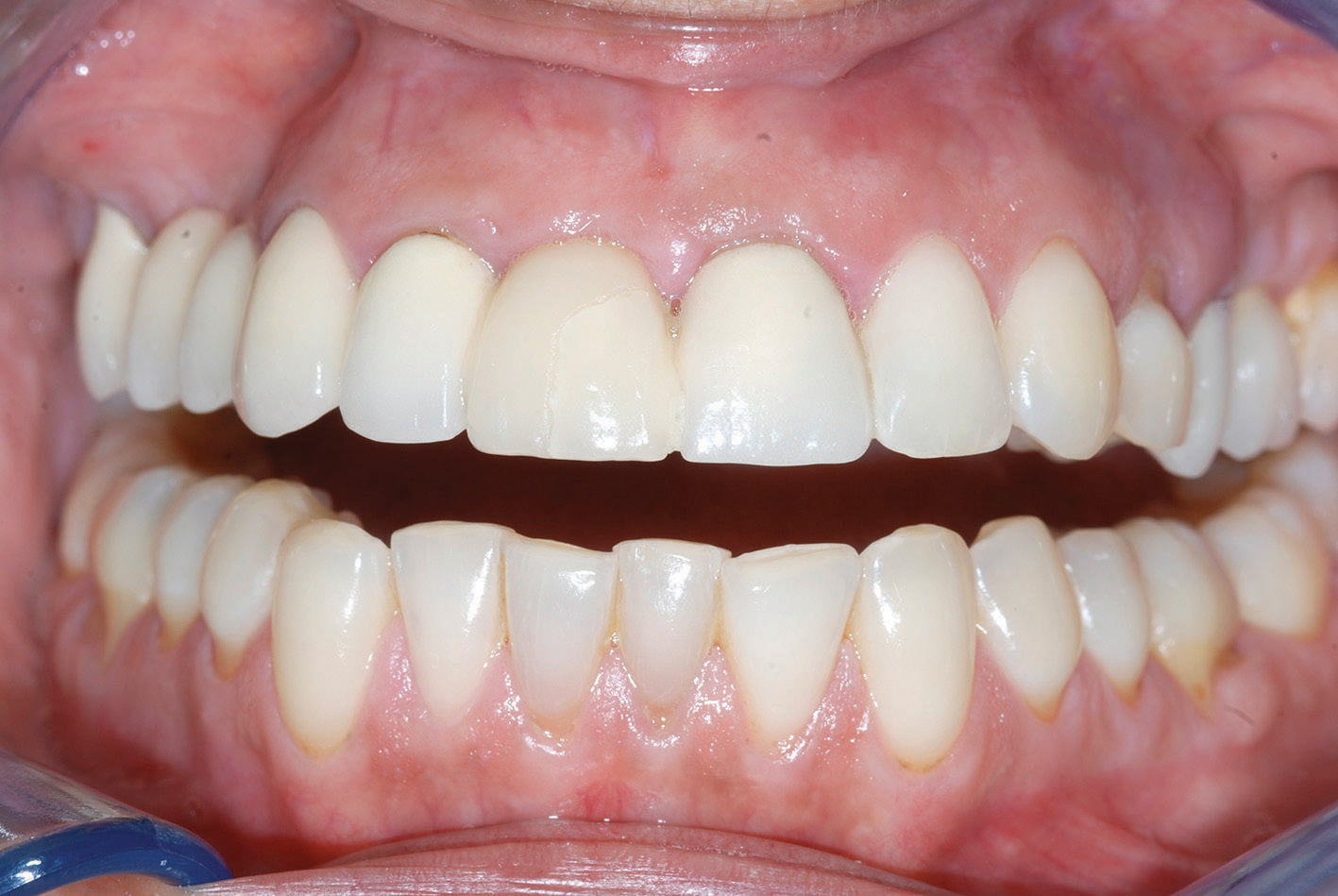

Figure 13B and Figure 14: Before treatment and Figure 15: After lower fixed orthodontics, lower incisor was extracted
Patient case — Adele
Adele’s upper dentition had been restored with a combination of crowns and bridges approximately 15 years ago.
An implant had been placed in the UL6 approximately 10 years ago. Starting 2 years prior to the current restoration, the upper restorations and teeth began to show signs of failure. Adele had not attended the practice as often as recommended due to the distance she lived from the practice (150 miles).

After clinical examination, the failure list was as follows:
- The crown on the implant in the UL6 position became loose, and porcelain fractured from the crown.
- The porcelain on the UR1 facial surface fractured (pontic of a three-unit bridge).
- UL4 became mobile and had deep pockets.
- UL5 crown was mobile and had pocketing.
- Gingival health declined.
- Bleeding on probing increased.
- Bleeding score was increased.
- Pocket depth increased.
- BPE scores increased.
- Gum recession on certain teeth increased (UL4, LL6, LR6).
- Esthetics started to decline.
- Lower teeth were becoming slightly crowded.
Radiographic findings
- Good bone levels around most teeth and the implant UL6.
- Thin lamina dura present in most areas.
- Vertical bone loss defects around UL4, UL5, LL6.
- Widened periodontal ligaments: UR6, UR3, UR2, UL1, UL2, UL3, LL5, LL7.
- Radiolucency in the tooth UL5.
Occlusal findings

- Group function guidance on left excursion, finishing on the UL5 (Figures 8A and 8B).
- Group function guidance on right excursion involving UR1 (Figure 9).
- In right lateral excursion Ul4 and UL5 nonworking side interferences – palatal cusps (Figure 10).
- Anterior guidance all on the UR1 (Figures 11A and 11B).
- Functional mobility (fremitus) of upper anterior teeth and left premolars on biting in ICP.
Diagnosis
- Primary and secondary occlusal trauma
- Gingivitis
- Caries
- Localized periodontal pocketing
Prognosis
A prognosis for every individual tooth was needed. The prognosis was given with a view that the tooth was left untreated. Table 2 details the prognosis for each tooth.
Good prognosis: Teeth with good prognosis were those with good bone support — lamina dura still visible and there was less than 10% bone loss.
Fair prognosis: The LL6 was given a fair prognosis due to the vertical bone loss pattern on the distal side. This tooth was an untreated tooth and therefore healthy.
It would be unlikely that this tooth would fail in the future; it could however lose more bone if the trauma (primary occlusal trauma) on the tooth persisted. If the trauma was removed from the tooth, and no further bone loss occurred, the tooth would have a good prognosis. The periodontal health could be managed. The UR6 had a narrow area of interproximal bone and significant buccal recession. This tooth was in working and nonworking side interference in lateral excursion — primary occlusal trauma. The tooth was also a major retainer for a four-unit bridge.
By restoring it as a single unit and reducing the interfering contacts and sharing the lateral load, the prognosis of the tooth would improve.
Hopeless prognosis: UR7 had greatly reduced bone support and was therefore subject to secondary occlusal trauma. If this continued, the tooth would become more mobile, lose more bone, and eventually need extraction.
Extraction of the tooth would have ongoing consequences that could contribute to destabilizing the bite. The lower opposing tooth could overerupt; however, presence of the UR7 should be taken into account when assessing the prognosis of the UR6. If the UR7 continues to experience more bone loss, it could affect the distal bone surrounding the UR6.
The decision was made to retain the tooth for now with regular periodontal maintenance and reduction in occlusal pressure. The patient also wears a soft night guard to reduce pressure from clenching. The UL4 and UL5 were deemed hopeless due to the bone loss and mobility around the UL4 and the fracture, caries, and heavily restored nature of UL5.
Treatment plan
In order to create a stable dental functioning system with predictability and longevity, the causes of the current destruction needed to be removed without creating new modes of accelerated destruction.
The treatment plan was formulated as follows once the diagnosis and prognosis had been discussed with the patient.
- Soft night guard to protect against excessive occlusal forces during sleep. This to be worn during hygiene therapy to reduce inflammation, pocket depth, and bleeding.
- Hygiene therapy.
- Oral hygiene instructions (OHI).
- Mechanical removal of plaque and tartar.
- Teeth with hopeless prognosis were left untreated since they were being extracted.
- Orthodontic consultation resulting in the decision to have fixed orthodontics on the lower arch to realign the teeth, alter the inclination to a more favorable stable position, and retract the lower anterior teeth.
- Extraction of a lower incisor to create the tooth position and arch form desired. This had been fully discussed with the patient prior to the treatment being carried out.
- Retention of the lower tooth position.
- Sequential restoration of the upper arch.
- Extraction of the hopeless teeth.
- Removal of failing restorations.
- Provisional restoration placement with the desired tooth inclination, morphology, length, and occlusal vertical dimension (OVD).
- Implant placement in the premolar areas.
- Definitive restorations.
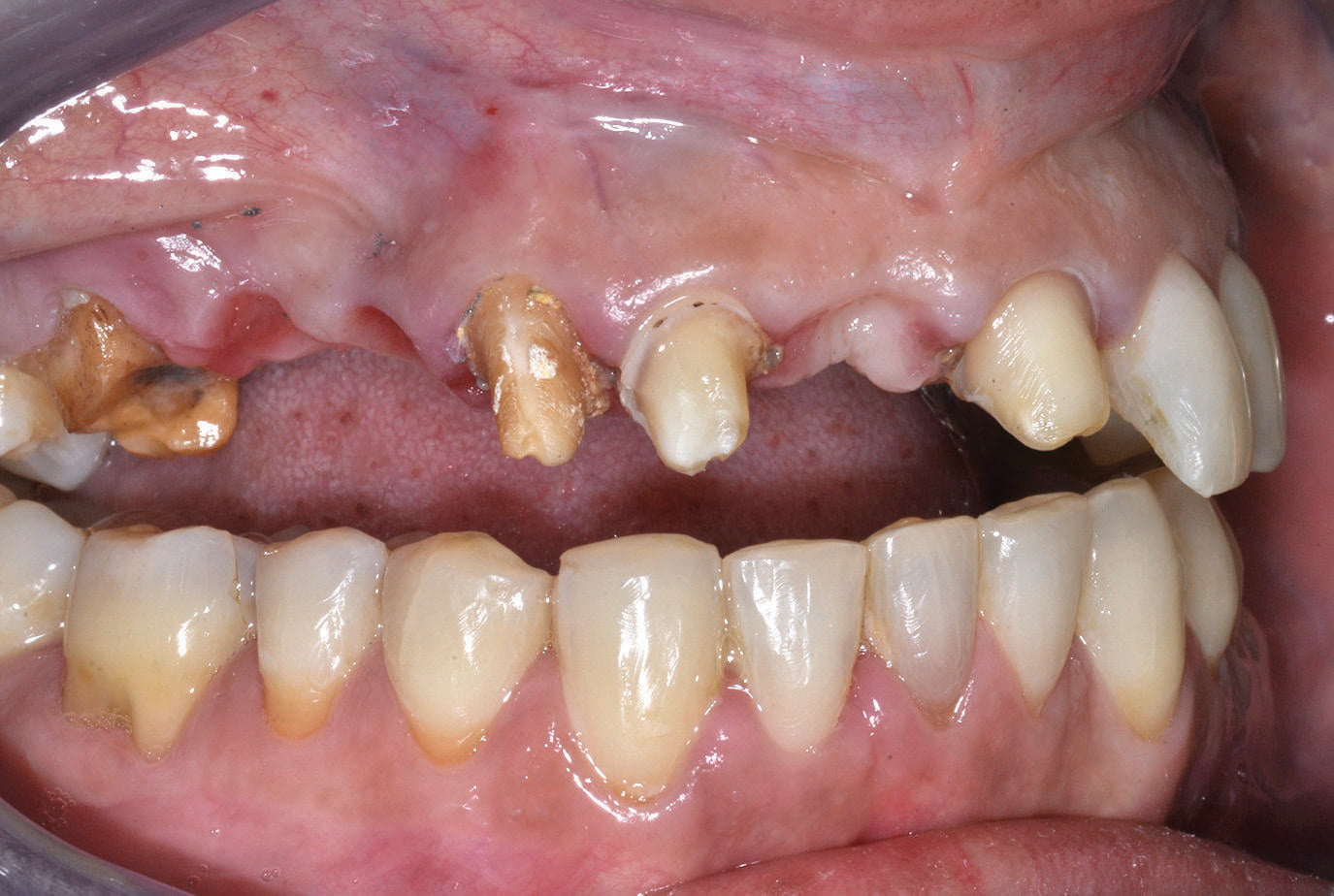

Figure 16: Removal of existing restoration and Figure 17: Refinement of the prepared teeth. Minimal veneer preparation on UL2 and UL3
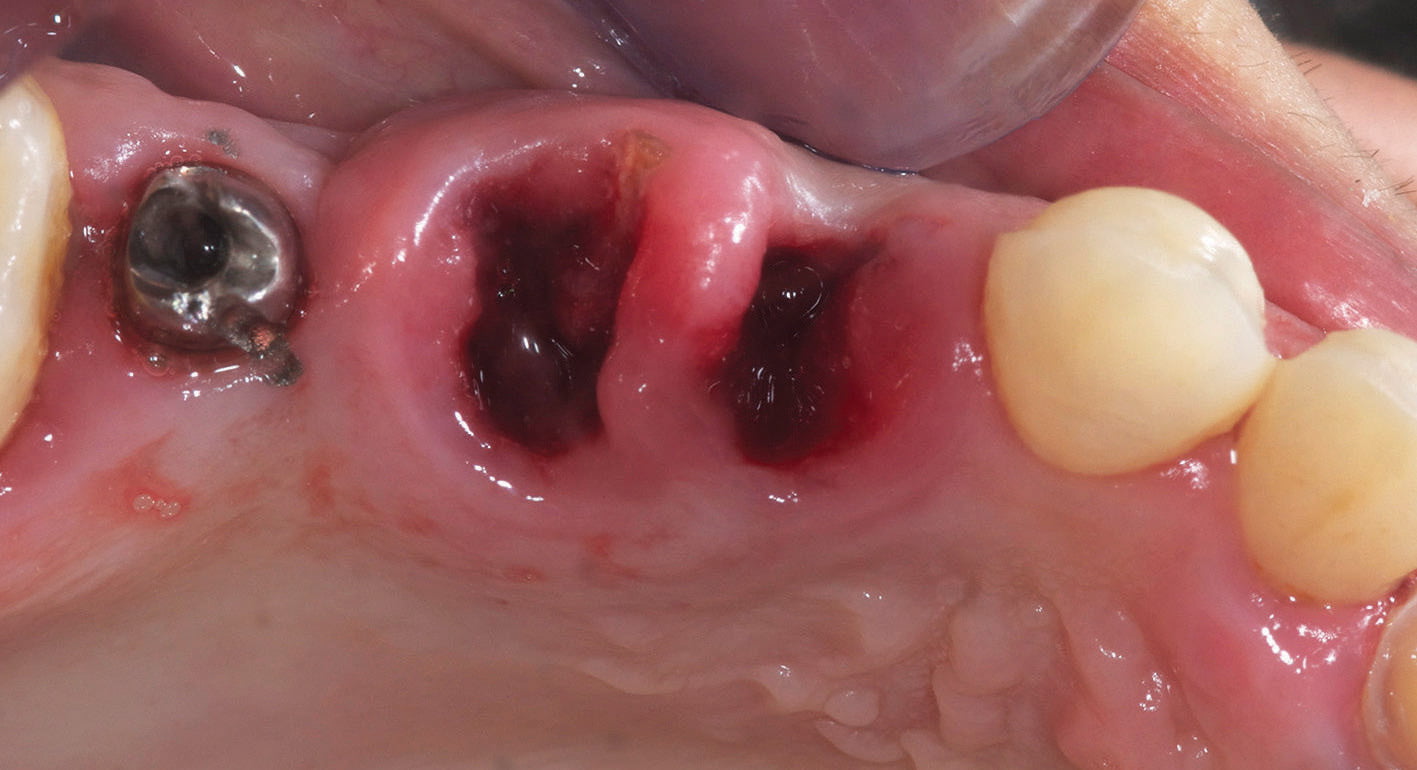
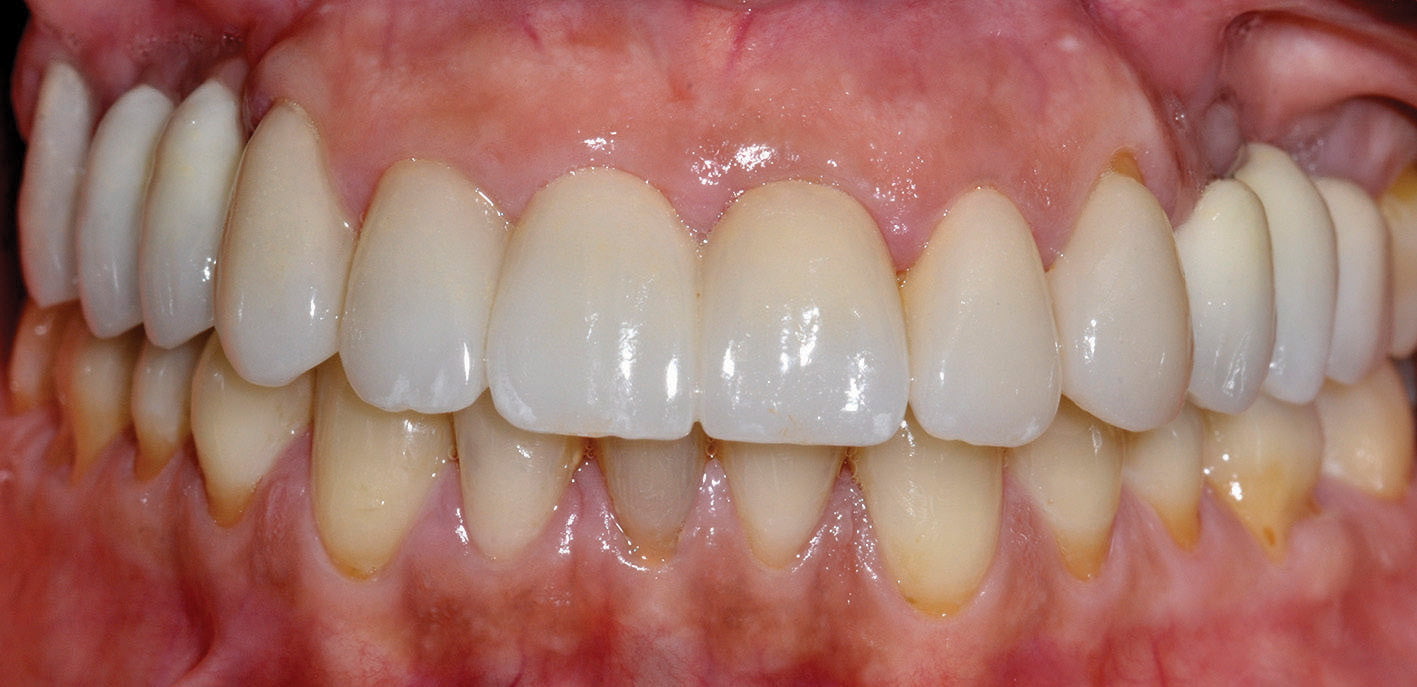
Figure 18: Extraction of hopeless teeth and Figure 19: Provisional Luxatemp® bisacryl restorations (DMG America)


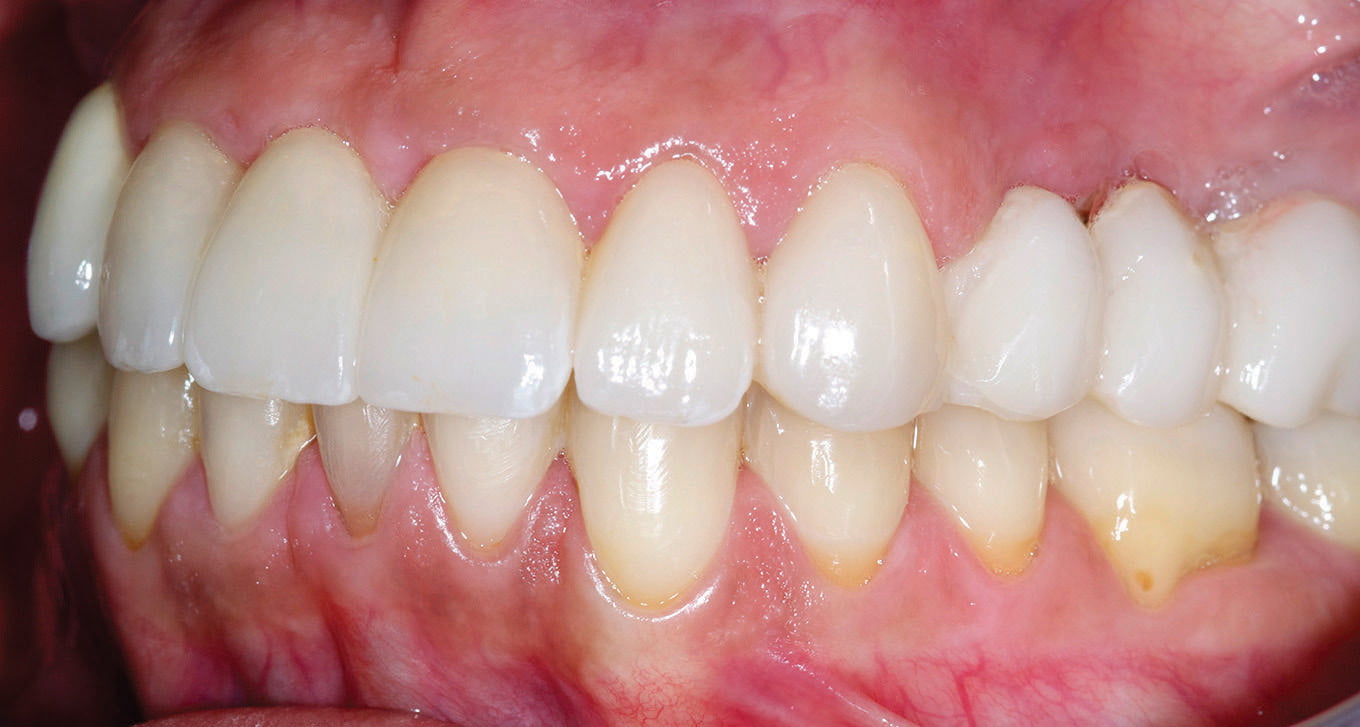
Figures 20A-20C: Definitive restorations UR2-UL3. Provisional PFM four-unit bridge UR6-UR3. Provisional Luxatemp bisacryl bridge from UL6-UL3 (palatal)
Shade and characteristics
After all of the treatment that had been carried out, the final stage was the communication of esthetics and creating a smile that the patient was happy with from an esthetic point of view. The dentofacial appearance of the work carried out also had to be deemed successful for the entire treatment to be a success.
The initial concerns of the patient were the appearance and function (mobile teeth and cracks). In order to communicate the desired esthetics, the author’s book, Creating Smiles, was used to communicate shape, texture, translucency, and incisal edge characteristics.
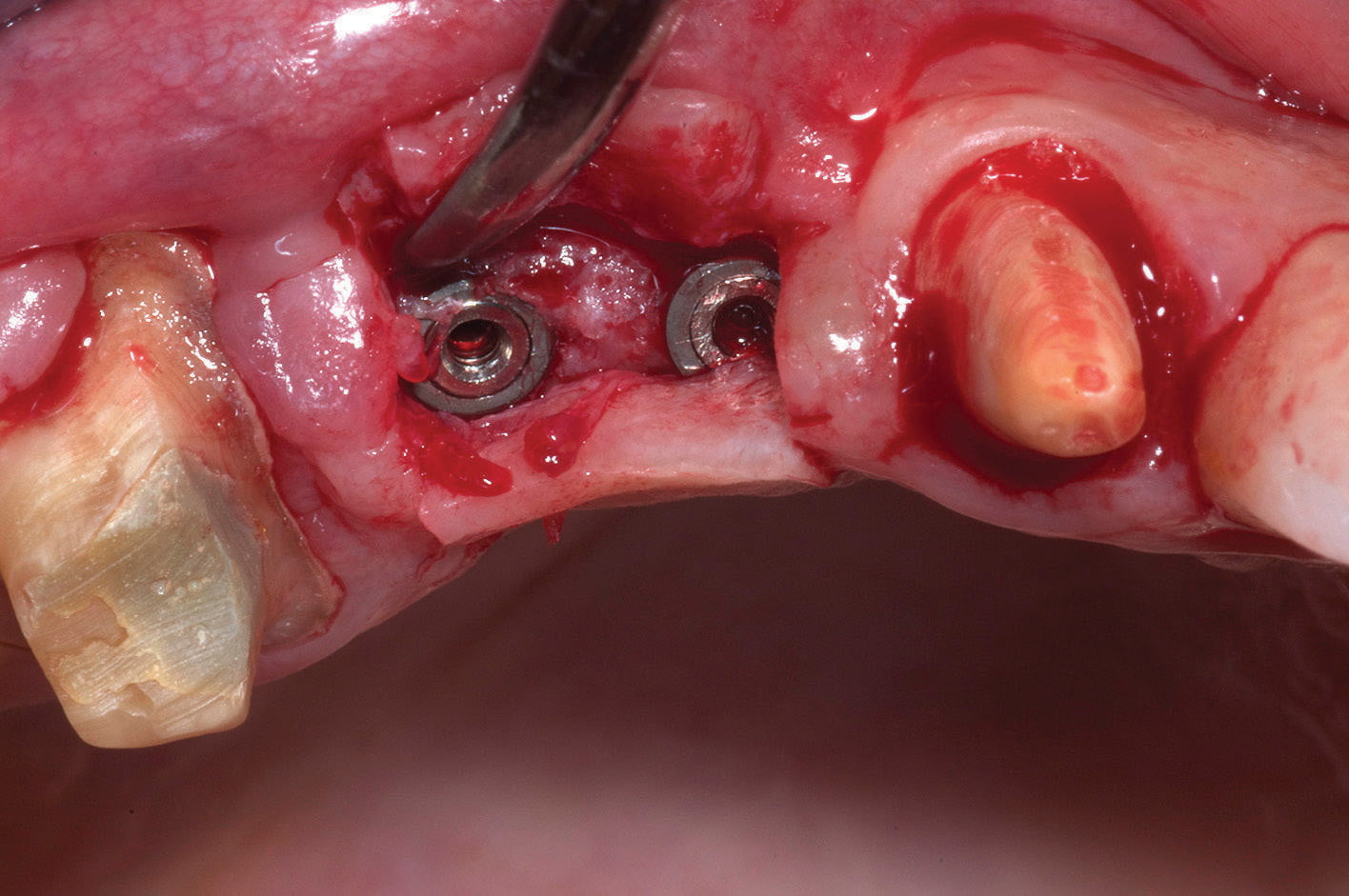
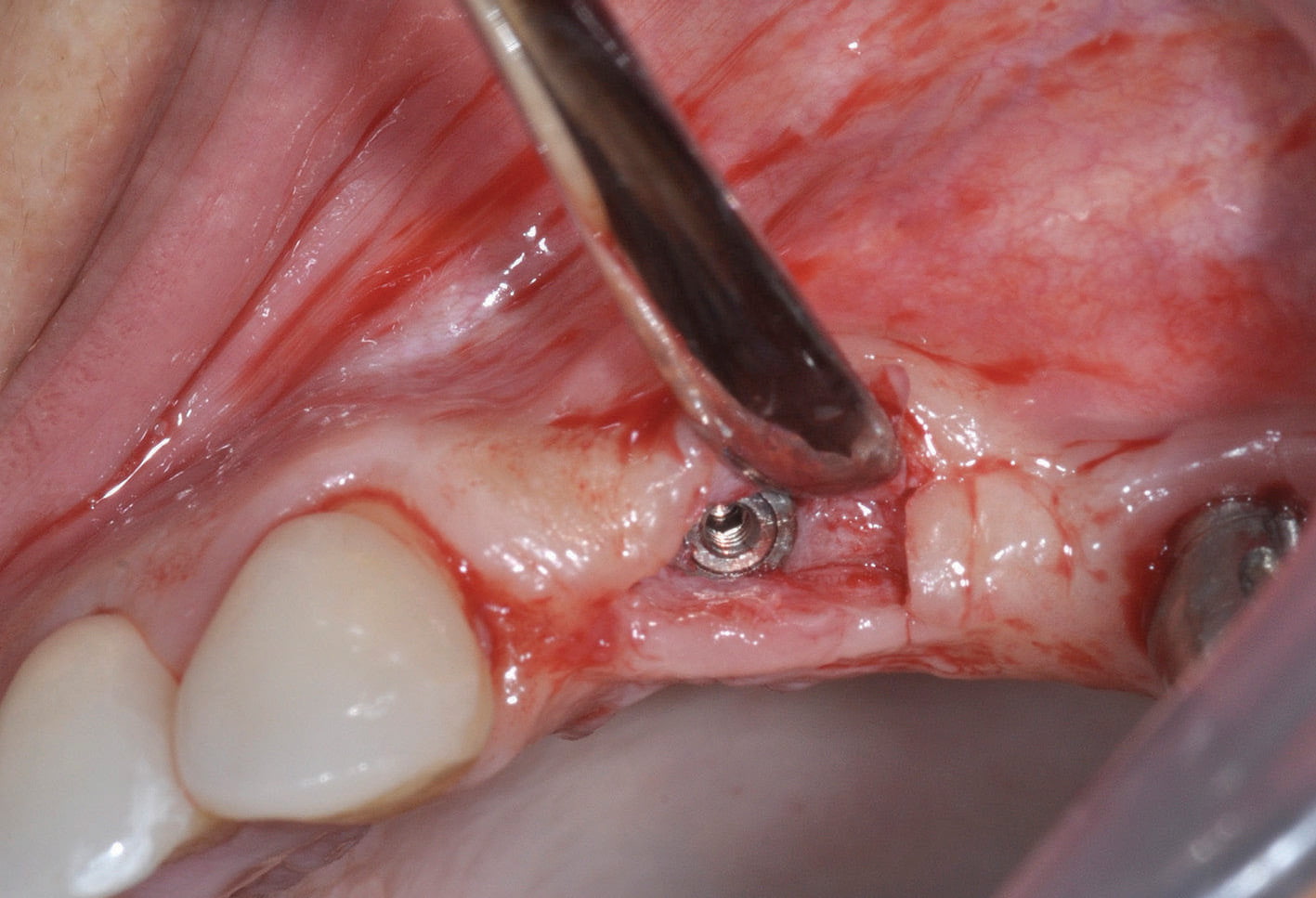
Figures 21A-21B: Uncovering of implants 4 months after placement
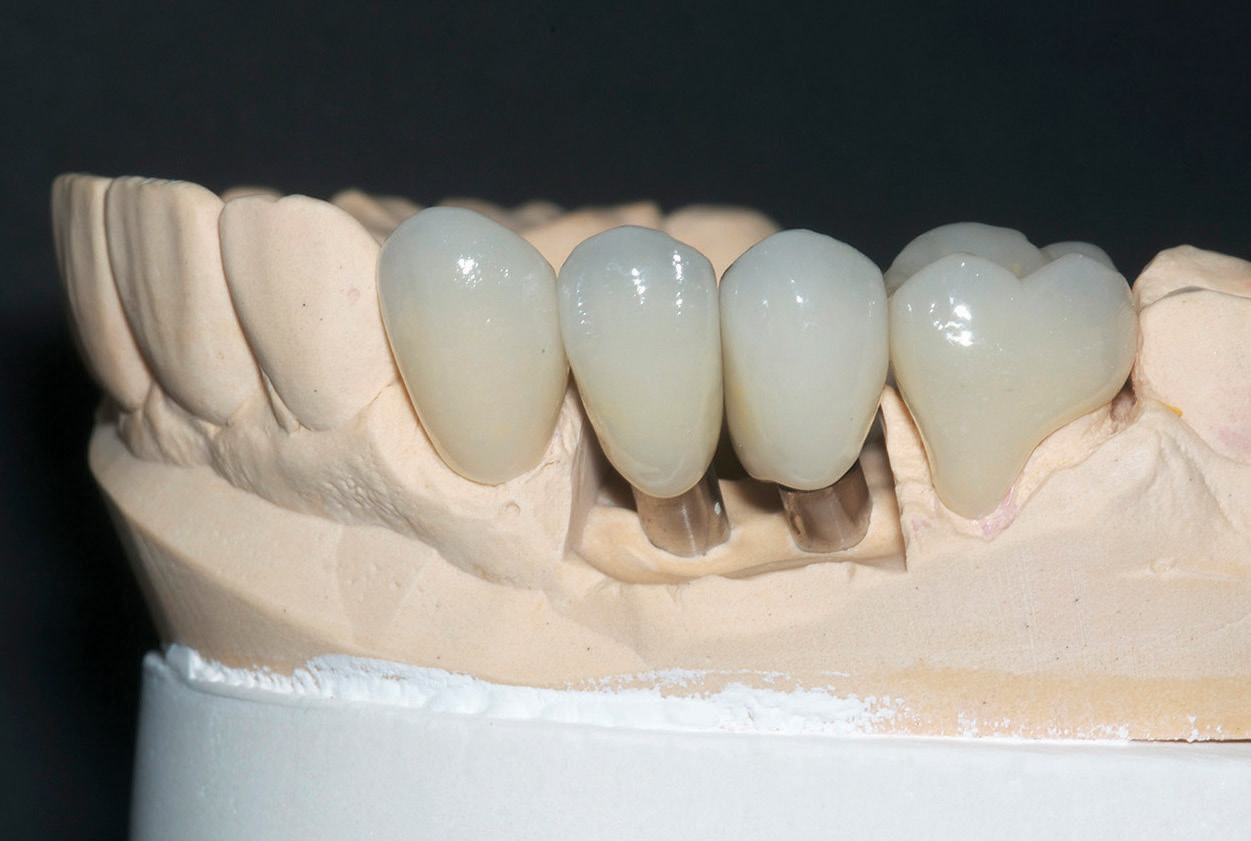

Figures 22A-22B: Restoration of Ankylos® (Dentsply Sirona) implants with Atlantis abutments and IPS e.max crowns
Summary
Lower arch
- Fixed orthodontics
- Lingual retention
Upper arch
- Extraction UL4, UL5
- Implant placement UR4, UR5, UL4 all with Atlantis™ (Dentsply Sirona) abutments
- IPS e.max® (Ivoclar Vivadent®) porcelain crowns UR6 – UR3
- IPS e.max porcelain bridge UR2 – UL1
- IPS e.max veneers UL2, UL3
- Porcelain-fused-to-metal bridge UL4 implant – UL6 implant
- Both UR7 and UL7 unrestored
General
- Condylar position CR
- No change in OVD
- Provision of a soft night guard if the patient clenches in times of stress
Results
The results of the treatment have been:
- An improvement in OHI and gum health — from 58% bleeding score to 10%
- A reduction in pocket depth and BPE score
- A reduction of excessive pressure on the teeth
- Adaptive mobility within normal limits
- Improvement of guidance patterns
- Increased stability of bite
- Improvement of esthetics
Adele now has as much improvement in dental health as could be achieved. The improvement in function and esthetics has increased her confidence both in terms of her tooth structure (not being afraid that teeth will break or fall out) as well as her communication with people.
Conclusion
In approaching any dental treatment, the aim should be to improve the patient’s dental health. This can also extend to improvement of the physical health and mental well-being. The aim of treatment should be to improve the prognosis of the teeth and related structures and to reduce the overall risk of any form of dental disease.
There are certain parameters within which we need to work, and there are anatomical constraints that we cannot escape. We can do our best for the patient in ensuring that the treatment plans we offer and the subsequent treatment we deliver creates a stable, functional, and esthetic endpoint.
The human body continues to change and adapt, and we need to try and maintain any deterioration or adaptation of the dental functioning system within normal limits and not be the cause of its acceleration. By adopting a comprehensive approach, treatment can be properly planned, delivered in a phased manner, and executed to a high standard.
The maintenance and aftercare program will help ensure ongoing success of the treatment delivered.

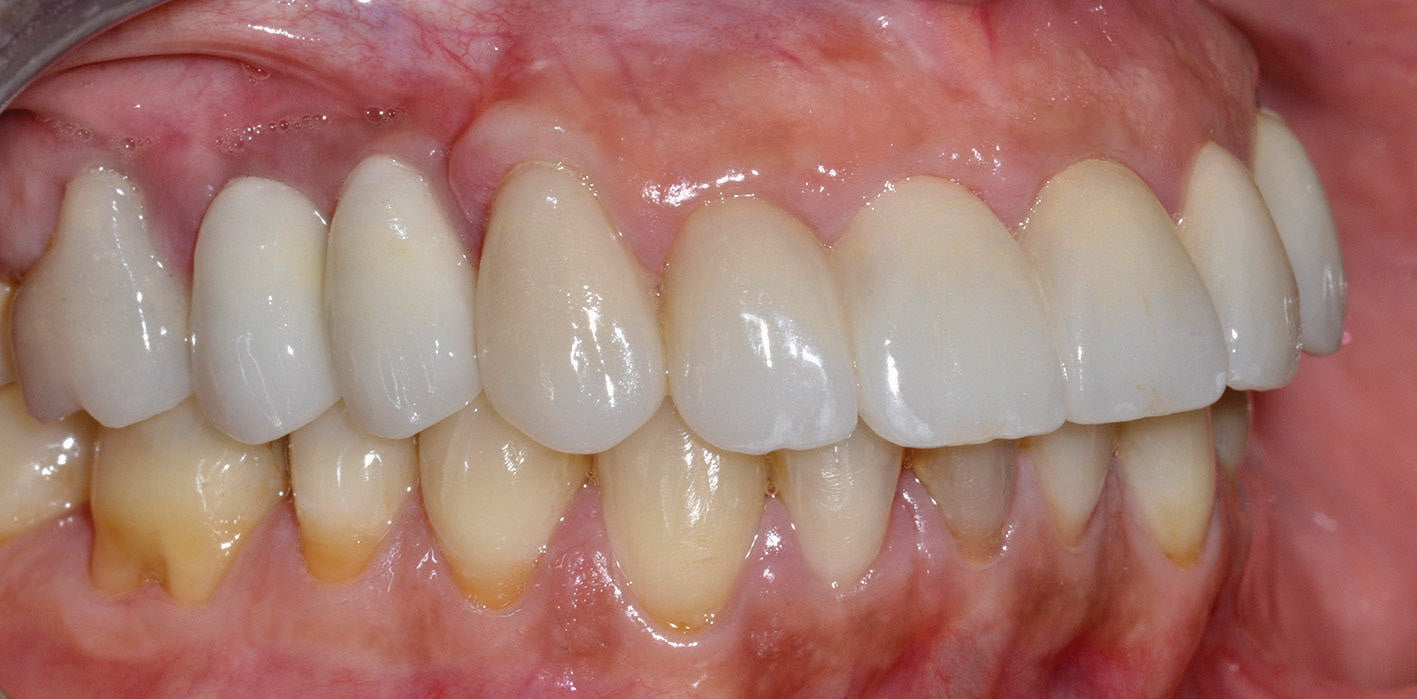
Figure 23: Restoration of Ankylos implants with Atlantis abutments and IPS e.max crowns and Figure 24: Fully restored and rehabilitated dentition
References
1. Davies SJ, Gray RJ, Linden GJ, James JA. Occlusal considerations in periodontics. Br Dent J. 2001;191(11): 597-604.
2. Svanberg GK, King GJ, Gibbs CH. Occlusal considerations in periodontology. Periodontol 2000. 1995;9:106-17.

 Komal Suri, BChD, is director of Smile Design Dental Practice in Wendover, Bucks, England. She is a graduate of the Kois Centre of excellence in Seattle, Washington, and lectures intensively in the United Kingdom. Her main area of expertise is in complex restorative and esthetic dentistry.
Komal Suri, BChD, is director of Smile Design Dental Practice in Wendover, Bucks, England. She is a graduate of the Kois Centre of excellence in Seattle, Washington, and lectures intensively in the United Kingdom. Her main area of expertise is in complex restorative and esthetic dentistry.

